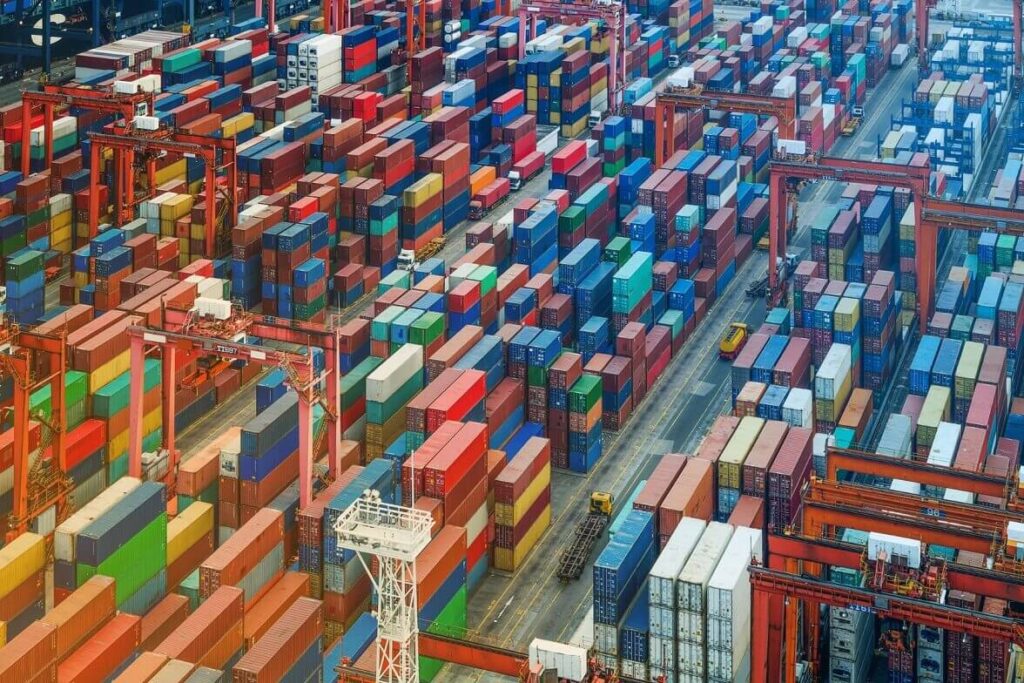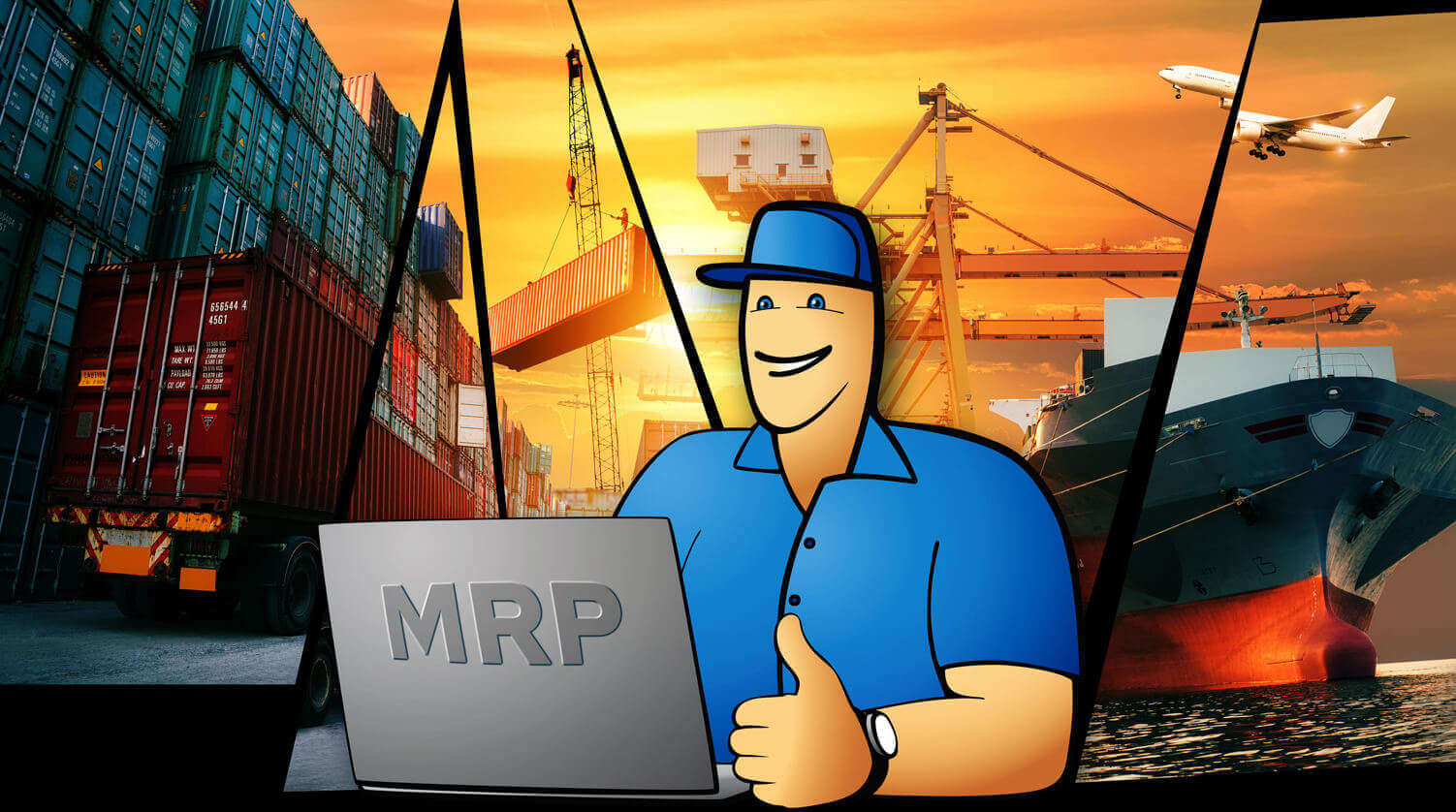What Is Supply Chain Traceability and How to Achieve It?
In today’s interconnected economy, supply chain traceability is becoming a critical requirement in more and more sectors to maintain trust and efficiency. In this guide, we look at the importance of supply traceability and how the right tools and strategies can help achieve it.

What is supply chain traceability?
Supply chain traceability is the process of tracking and monitoring every step that a product takes through the supply chain—from sourcing raw materials to delivering the final product to the customer. It’s an essential aspect of supply chain management because it provides complete visibility of a product’s lifecycle.
Traceability covers several key areas:
- Production tracking – monitoring the entire production process to ensure quality and consistency at every stage.
- Inventory tracking – keeping an eye on stock levels and knowing exactly where your materials and products are at all times.
- Cost tracking – understanding the costs involved at each supply chain step so you can manage your budget effectively.
- Order tracking – following customer orders from placement through shipping to guarantee that products are delivered on time and meet customer expectations.
Traceability also goes hand in hand with efficiency. For instance, by knowing how much stock you have and how quickly it’s moving, you can avoid overstocking, reduce waste, or identify cost-saving opportunities.
What is supply chain management?
Supply chain management, or SCM, is the process of overseeing and coordinating every step involved in getting a product from raw materials to the customer. This includes sourcing, production, inventory management, transportation, and delivery.
The goal of SCM is to ensure everything flows smoothly, on time, and within budget.
The health of a supply chain lies in its efficiency and cost-effectiveness. By managing the flow of goods, services, and information, businesses can reduce costs, improve productivity, and more effectively meet customer demand.
Traceability plays a key role in SCM by providing visibility into where products are, where they’ve been, and how they’ve been handled at each stage. It also identifies bottlenecks, reduces waste, and addresses issues, like recalls, quickly.
The importance of traceability in SCM
Traceability can help your business stay competitive and resilient. Don’t limit traceability to tracking. It’s also about achieving specific goals that keep the supply chain running smoothly, efficiently, and in compliance with industry standards.
A robust traceability system provides multiple advantages that significantly improve your supply chain operations. These include:
- Visibility. Traceability shows exactly where your products and materials are at every stage of the supply chain. This level of visibility allows you to improve operational efficiency, ensure product quality and safety, meet regulatory requirements, and offer greater transparency and accountability.
- Transparency. With clear visibility, you can show customers and regulators exactly where and how products are sourced and handled.
- Risk mitigation. Traceability helps businesses identify risks early—whether a quality issue, a supplier problem, or a potential recall—and respond quickly to prevent bigger disruptions.
- Regulatory compliance. Many industries require detailed records of product origins and handling. Traceability helps you meet these requirements to avoid fines or damage to your brand and reputation.
- Improved decision-making. Real-time data allows businesses to make more informed decisions, optimize operations, and reduce waste.
- Customer trust. Being able to provide transparency about your supply chain builds confidence with customers and leads to loyalty.
- Sustainability. Traceability supports your sustainability efforts by providing data on sourcing, production, and transportation. This allows you to minimize environmental impact, reduce waste, and meet ESG (environmental, social, and governance) goals.
The challenges of implementing traceability
While no one doubts its benefits, traceability can be challenging to implement. Because of the complexity of global supply chains with products often moving across multiple countries, suppliers, and transport systems, maintaining consistent visibility is a constant struggle.
Not all businesses can access the advanced tracking tools needed for full traceability. Implementing a comprehensive traceability system can require significant technological and staff training investments. Some businesses aren’t willing or able to shoulder the costs of these integrations. This, in turn, may lead to incomplete or incorrect data that can undermine the effort.
Another challenge lies in the varying regulatory requirements across different regions and industries. Companies operating in multiple countries often need to comply with a wide array of regulations, which may require different data formats or levels of detail in tracking information. This lack of standardization makes unifying traceability systems difficult. Smaller suppliers might especially struggle to meet the demands of their larger partners when it comes to data sharing, further complicating the process of achieving full traceability in the supply chain.
Best practices for implementing traceability
- Map your supply chain. Identify the critical points in your value chain that require tracking. This includes everything from procurement to delivery. By doing your due diligence at each step, you will improve product quality while also reducing your carbon footprint.
- Focus on what to track. Determining which data points are most critical to your operations is essential. Not every piece of information needs to be tracked, so prioritize areas that impact product quality, safety, and compliance. Focusing on the right metrics can reduce complexity and ensure your traceability system is both effective and manageable.
- Collaborate with stakeholders. Partnerships with suppliers, retailers, and other stakeholders are crucial for traceability. Ensure that everyone is on the same page regarding sharing data and meeting regulatory requirements. Integrate your supply traceability requirements into supplier relationship management.
- Be mindful of sustainability goals. As more companies prioritize sustainability initiatives, it’s important to integrate these into your traceability efforts. A more sustainable supply chain can be achieved by collecting data on resource usage, emissions, and waste reduction. Aligning traceability with sustainability objectives helps meet regulatory demands and enhances your brand’s reputation while reducing environmental impact.
- Implement supply chain management (SCM) software. If you don’t already use inventory or production software, implementing supply chain visibility software is the best way to boost traceability throughout the supply chain. It helps you track materials, monitor production, and maintain visibility across all stages of your operations.
Traceability tools and technologies
Implementing traceability relies on the use of technologies to enhance supply chain transparency, especially in an increasingly global marketplace. Here are some must-have tools to optimize your traceability:
- Inventory and supply chain management systems. A solid inventory management system helps you track inputs, finished products, orders, lead times, and more. Powerful packages also support risk management for identifying inefficiencies before they become bigger problems. But also returns management, quality control, and a host of other useful features.
- Barcodes and RFID tags. These are widely used for tracking goods through the value chain. They provide real-time data for labeling, stock updates, and shipment verification. Good inventory software often includes integrated barcode systems.
- Blockchain technology. For ultimate security and accountability, blockchain technology can create an unchangeable record of each transaction across the traceable supply chain. It’s a powerful tool for conducting audits and guaranteeing compliance with regulatory requirements.
- IoT (Internet of Things). Smart sensors powered by IoT can track and monitor conditions like temperature or humidity of products. This helps maintain product quality during transit, especially for sensitive items.
- AI and advanced analytics. New technologies like AI can help optimize procurement decisions and anticipate disruptions before they impact the supply chain. These tools improve overall functionality and provide data for decision-making.
How does supply chain software help with traceability?
Supply chain software is vital in maintaining an efficient and traceable supply chain. With real-time data, you can monitor inventory levels, production progress, and order fulfillment all in one place. This ensures you know exactly where materials and products are and how they move through the supply chain.
SCM can further help stay compliant with regulatory requirements by providing detailed sourcing, handling, and transportation records. This is critical for audits or meeting industry standards. SCM software helps mitigate risks, identify bottlenecks, and enable quicker responses to potential disruptions.
When choosing SCM software, look for the following functionalities:
- Inventory management. A software that offers precise inventory tracking so you can easily monitor stock levels, movement, and location.
- Production planning. Your software should enable production tracking to ensure that everything is progressing smoothly, on time, and according to schedule.
- Cost tracking. Detailed cost analysis tools let you track the costs at every stage.
- Order management. Look for software that streamlines order tracking so you can follow customer orders from placement through delivery.
- Tracking tools and features. Your SCM software should be able to seamlessly integrate with traceability solutions like barcoding and shop floor reporting systems. These tools provide additional data that help you gain full visibility and control over your supply chain.
- Integrations with third-party business apps. The software you choose should connect with fulfillment, shipping, and e-commerce platforms to expand your supply chain visibility.
Key takeaways
- Supply chain traceability is the process of monitoring and documenting a product’s entire lifecycle, from sourcing raw materials to final delivery, providing detailed records of every step.
- Maintaining supply chain visibility is important because it helps identify risks, optimize operations, and meet regulatory requirements, ultimately improving efficiency and customer trust.
- Tips for elevating supply traceability include mapping critical points in your supply chain, focusing on key data, collaborating with stakeholders, and aligning efforts with sustainability goals.
- Supply chain management software can provide real-time data, streamline processes, enhance visibility, and help ensure compliance, making it a vital tool for effective traceability.
- Various tech tools like IoT, blockchain, RFID tags, and advanced analytics enhance supply chain traceability by providing real-time tracking, secure data, and insights for better decision-making and operational efficiency.
Frequently asked questions
Tracing in supply chain management refers to tracking the movement and history of products or materials throughout the supply chain. This involves monitoring their origin, production, and distribution to ensure quality, compliance, and transparency at every process stage.
End-to-end supply chain traceability means having full visibility into every phase of the supply chain, from sourcing raw materials to delivering the final product to the customer. It allows businesses to monitor and document each step of the product’s journey, ensuring accountability and providing a clear record of its lifecycle.
Supply chain visibility refers to the ability to see and monitor the status of products and materials as they move through the supply chain. Traceability, on the other hand, involves tracking the entire history and journey of a product, documenting each stage from start to finish, including where and how it was handled.
You might also like: What Is Pipeline Inventory?




